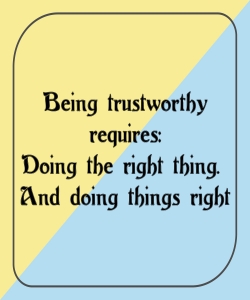Tidbits, Not Tag Lines, Work Best in Blog Marketing
In content writing, word tidbits and tag lines are both designed to help readers remember something– a concept, a company, a product, a service. Just the other day, when I came across examples of both, I realized just how important the difference is between a tagline and a word tidbit when it comes to blogging for business…..
“We wanna see-‘ya in a Kia” – is a tag line. It’s catchy, it’s memorable – it’s advertising. Thing is, that tagline tells me nothing about the car, about the company, about any one dealership or salesperson, nothing about the experience I would have if I chose to purchase and drive a Kia.
Contrast that with a word tidbit I caught last week in a local news bulletin about the fact that Edwards Drive-In restaurant is closing after more than sixty years in business, but that their food truck business will be continuing. “We’re selling the store, not the soul”. So much more than a tag line, this word tidbit captures the sense of “we” (the owners of the store) and how much the owners care about continuing their decades-long relationship with customers.
Fully fourteen years ago, with Say It For You in its n infancy, I’d mentioned a word tidbit found in Daniel Gardners’ book The Science of Fear. “We report the rare routinely, and the routine rarely,” he said. That powerful combination of everyday words unified concepts I already knew, but which I hadn’t synthesized into any true understanding about the media.
Just about a year later, I blogged about another “grabber” tidbit from a review of Maxine’s Chicken & Waffles restaurant: “And, wow, those wings…the breading was crispy and well-seasoned without overpowering the tender meat.” (Here’s the tidbit: “Maxine’s wings are nothing like the fast-food varieties that are more batter than bird”.
That word tidbit made me think about business blogging: Searchers arrive at your blog seeking information about what you do, what you sell, and what you know. The “batter” might be the way the blog site is laid out, the pictures and illustrations, and even cleverness in the writing. But, when it comes right down to it, the “meat” is the well-researched information, and the links you provide readers to sources they might not have thought to research themselves.
What a blog should aim to do is capture concepts relating to your business, putting words together is a new way, sharing an “aha!” experience with your readers that helps them know the subject better, but also helps them get to know you a little better.
Taglines may help them remember it, but word tidbits force them to think about it!






Follow us online!